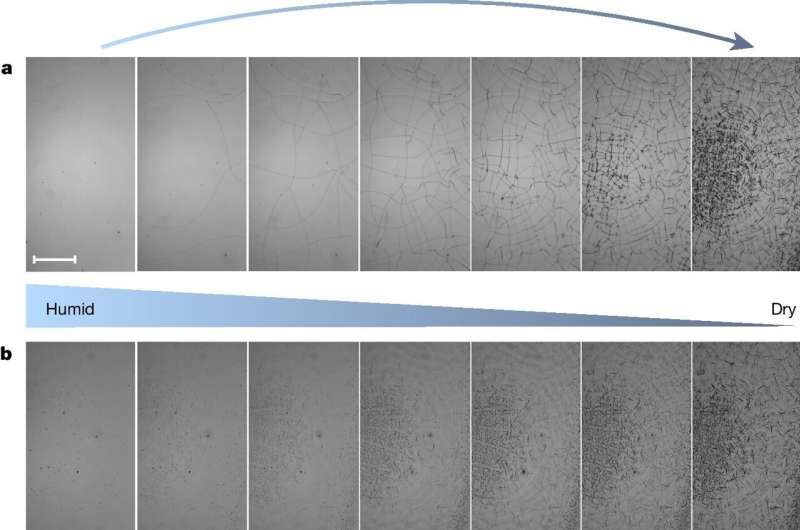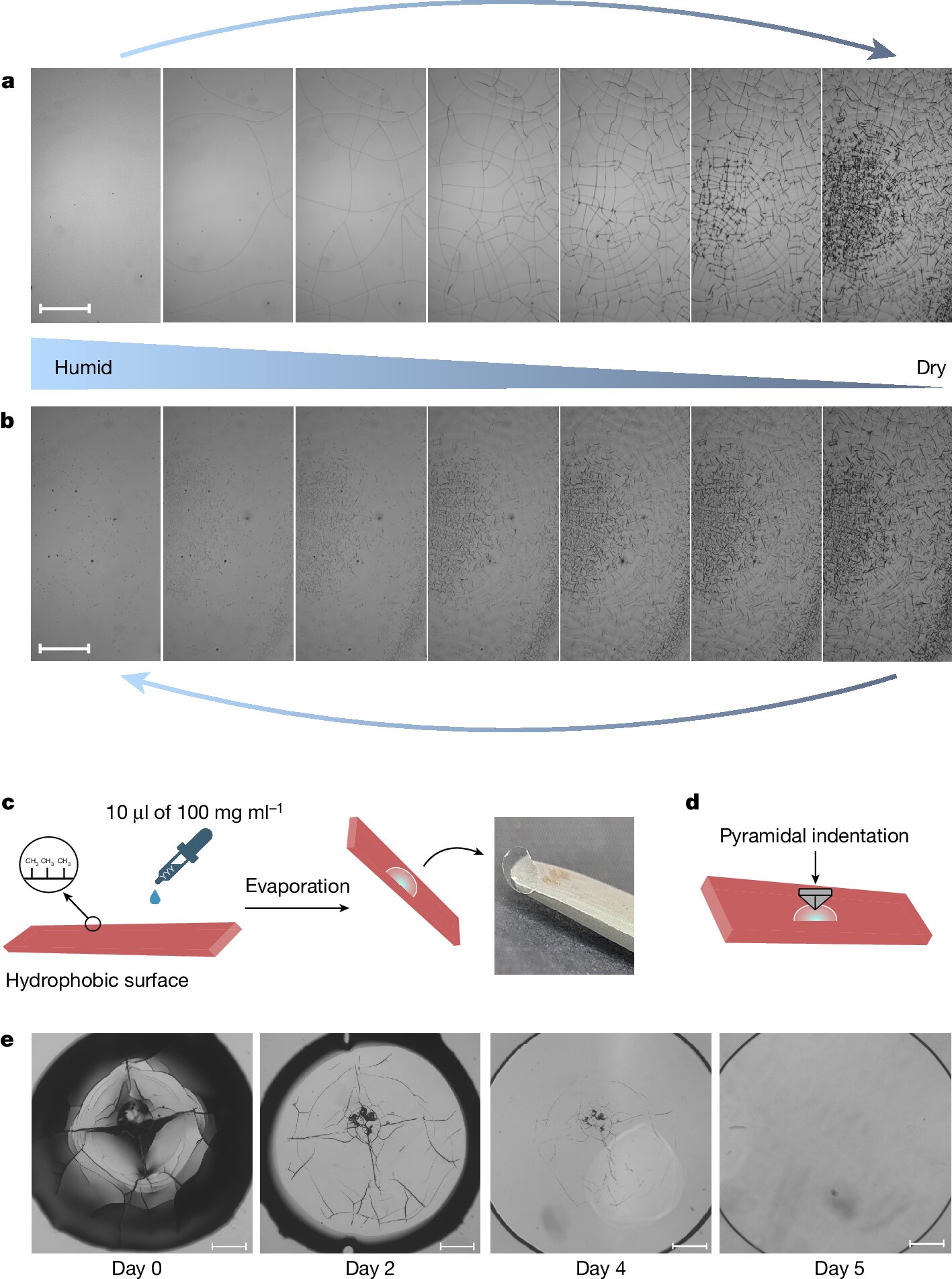
Cracking and self-healing of peptide glass. Credit: Nature (2024). DOI: 10.1038/s41586-024-07408-x
A team of materials scientists from Tel Aviv University and Ben-Gurion University of the Negev, both in Israel, working with a colleague from the California Institute of Technology in the US, have discovered that mixing a certain peptide with water results in creating a self-assembling and self-healing glass.
While investigating the properties of other proteins, the group came across the discovery, which is published in Nature Communications. Silvia Marchesan, with the University of Trieste, Italy, has published a News and Views article in the same issue of the magazine, describing the newly found glass and possible uses for it.
In this new endeavor, the research team was investigating the possibility of using short peptides as the basis for conventional components of complex macro-molecules. As part of this effort, they were working with a dipeptide molecule consisting of two phenylalanine residues when they discovered that mixing it with nothing but water led to the creation of a self-assembling type of supramolecular amorphous glass as the water evaporated at room temperature.
What was most surprising about the discovery was that self-assembly of peptides in the past has usually led to the creation of materials with a crystalline structure, something that would not be transparent and thus not even close to glass.
With the discovery of the new type of glass, researchers began to investigate its properties. They found that in addition to building itself automatically, the glass was also self-healing and adhesive, despite being very stiff.
It was also considered extremely strong. The researchers found that it was as transparent as traditional glass, and further investigation showed that the glass could be used to make glazing and coatings to create hydrophilic surfaces. They also discovered that it can be used to make things that require precision, such as optical lenses that can be used for a wide range of magnification purposes.
The research team suggests that additional testing could lead to a wide variety of uses for the glass, noting that the new type of glass does not require much energy to produce, as is typical with most glasses now in commercial use.
More information:
Gal Finkelstein-Zuta et al, A self-healing multispectral transparent adhesive peptide glass, Nature (2024). DOI: 10.1038/s41586-024-07408-x
Silvia Marchesan, self-healing glass from a simple peptide – just add water, Nature (2024). DOI: 10.1038/d41586-024-01505-7
© 2024 Science X Network
citation: Researchers accidentally discover that mixing water with a peptide results in self-assembled, self-healing glass (2024, June 13) retrieved June 13, 2024 from https://phys.org/news/2024-06-accidentally- peptide-results – jami.html
This document is subject to copyright. Except for any fair agreement for study or private research purposes, no part may be reproduced without written permission. The content is provided for informational purposes only.
